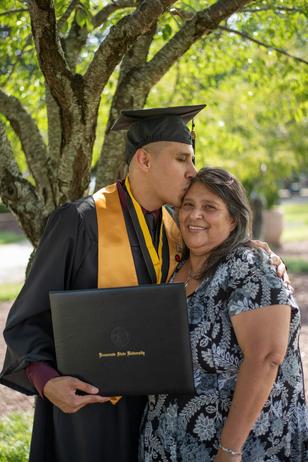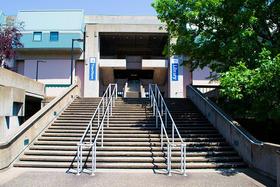Community College Success Stories Parents Should See
Community colleges often carry a misperception: that they are fallback options—or short-term stepping stones with limited outcomes. Yet, beneath the stereotypes lie rich stories of transformation, resilience, and generational change. For parents guiding teens or adult learners, the success stories of community college alumni offer powerful lessons and real-world proof of what’s possible.
This article highlights current (2025-2026) examples and themes, backed by data and expert insights, to help parents see community college not as second best—but as a viable pathway to long-term success.
Why Parents Should Pay Attention to Community College Paths
1. Cost-efficient and flexible
Community colleges generally offer far lower tuition than four-year institutions, making them attractive for families mindful of debt. They also offer high flexibility—night classes, hybrid formats, and part-time schedules—making them ideal for working students, parents, or those needing to balance other commitments.
2. Transfer and degree pathways
Many community colleges offer guaranteed or guided transfer agreements with four-year universities. These articulation agreements smooth the transition to bachelor's degree programs. Some also offer “university center” models so students can complete a four-year degree while staying on the community college campus. For example, Macomb Community College supports degree completion through its University Center model. (Wikipedia)
3. Career and technical education
Beyond transfer, community colleges often provide strong career and technical education (CTE). Alumni can emerge with industry-ready skills or certifications, ready to enter the job market or even start small businesses.
4. A realistic route to upward mobility
For first-generation students or adult learners, community colleges offer a more accessible entry point. Many stories show graduates overcoming socioeconomic obstacles, starting from low-wage jobs and rising into professional roles. (See Mesa Community College’s collection of alumni success stories.) (Mesa Community College)
Success Stories That Inspire Wake Tech: From health to entrepreneurship and IT
At Wake Technical Community College, alumni stories highlight unexpected pivots and breakthroughs.
Bradley Huntoon (Class of 2025) shared how small certificates in IT led directly to employment.
Eliane Hernández Acosta (Class of 2020) went from community college to teaching careers.
Caroline Morrison, once unsure of her direction, turned Wake Tech credentials into a thriving small business. (Wake Tech)
These stories illustrate how community college can be a launchpad, not just a stopover.
Montco (MCCC): From community college to Ivy League
A standout is alumna Blessing Osazuwa, whose community college start at Montgomery County Community College paved the way for acceptance at Columbia University. (Montgomery County Community College)
Her journey counters the stereotype that community college is a permanent end point. Instead, it shows how early preparation, determination, and faculty support can lead to top-tier opportunities.
City Colleges of Chicago: Overcoming barriers
At City Colleges of Chicago, alumni stories often center on overcoming language, financial, or family obstacles.
Viktoriia Drozdovska arrived as an English language learner and yet earned her degree.
Tyshawn Allison used scholarship supports and campus mentorship to transfer to a four-year school. (CCC)
These narratives show that with guidance and institutional support, disadvantaged students can thrive.
Emerging news example: Precocious prodigy
In 2025, 10-year-old Alisa Perales made headlines as a community college graduate with multiple associate degrees—proof that community college pathways can bend conventional expectations entirely. (People.com)
While her case is extreme and not representative, it underscores the flexibility and potential of such institutions.
Key Themes From Alumni Successes
From examining many success stories, several recurring patterns emerge. Parents and students should watch for these features when assessing community college options.
Theme | Why It Matters | What to Ask the College |
Strong transfer support & articulation agreements | Helps prevent credit loss and ensures smoother four-year pathways | “Which universities accept your graduates, and how many credits transfer?” |
Comprehensive wraparound support | Students facing financial, familial, or academic challenges often need holistic support | “Do you provide tutoring, advising, child care assistance, or emergency funds?” |
Career-aligned programs & internships | Hands-on experience boosts employability upon graduation | “Can I get internship placements or networking through your CTE programs?” |
Alumni & mentoring networks | Connections with past students unlock opportunities and social capital | “Do you maintain alumni mentoring or job-placement support?” |
Flexible scheduling & delivery modes | Essential for working students, caregivers, and adult learners | “Are evening, weekend or online classes widely offered?” |
These themes align with promising practices that help community college students succeed. For example, research shows that providing child-care, referral services, and coordinated institutional supports increases persistence and graduation among student parents. (perspectives.acct.org)
Advice for Parents: How to Spot a College That Fosters Success
Parents are often the primary advisors in a student’s educational journey. To help your child succeed at community college, here are actionable steps:
Tour and talk: Visit prospective community colleges. Ask to meet success coaches or student support staff.
Research transfer outcomes: Request data on how many graduates transfer to four-year institutions successfully and in what timeframe.
Review student support services: Look for robust tutoring centers, mental health services, and help with basic needs (food, transportation, housing).
Ask about career outcomes: Good schools track employment and earnings of graduates.
Encourage early involvement: Urge your student to join clubs, campus leadership roles, or mentorship programs from initial semesters.
Support time management at home: Flexibility is key, but structure matters—help them plan schedules, guard study time, and stay accountable.
The Broader Impact: Why Community College Success Matters
When alumni succeed, the impact is intergenerational:
Economic mobility: Communities benefit when graduates acquire credentials and enter higher-paying careers.
Role modeling: Alumni often become first in their families to earn degrees, lifting the educational aspirations of siblings and children.
Institutional momentum: Success stories strengthen a college’s reputation, attracting better resources and partnerships.
One nonprofit, One Million Degrees, seeks to amplify these effects by providing coaching, mentoring, and financial support to low-income community college students, reporting high rates of persistence and post-college engagement among participants. (Wikipedia)
Looking Ahead: Trends for 2025–2026 and What Parents Should Expect
Expanded ASAP-style initiatives: SUNY’s “Advancing Success in Associate Pathways” (ASAP) program, which offers increased guidance and wraparound support, has shown a roughly 20% credit completion boost and stronger retention rates. (Times Union)
Stronger data transparency: More community colleges are publishing alumni outcome data, helping parents and students make informed choices.
Increased support for student parents: As the number of community college students raising children continues to grow, institutions are reimagining child-care and family resource supports.
Rise of hybrid credentials: Micro-credentials or stackable certificates that lead toward degrees are becoming more common, offering early wins and momentum for learners.
Conclusion: Real Stories, Real Hope
The archival tales of transformation—students entering community college uncertain, then emerging as professionals, transfer scholars, entrepreneurs, or mentors—are not exceptions. They’re compelling proof points of what’s possible when institutions provide strategic support and students display grit and ambition.
For parents, the takeaway is clear: learn what the college offers beyond classrooms. Ask about support, transfer pathways, and outcomes. Encourage your learner to engage early, use services, and persist.
Above all, remember: community college success stories aren’t just nice anecdotes—they are blueprints. Through them, parents and students can envision a path forward where community college is not a fallback, but a launchpad.















